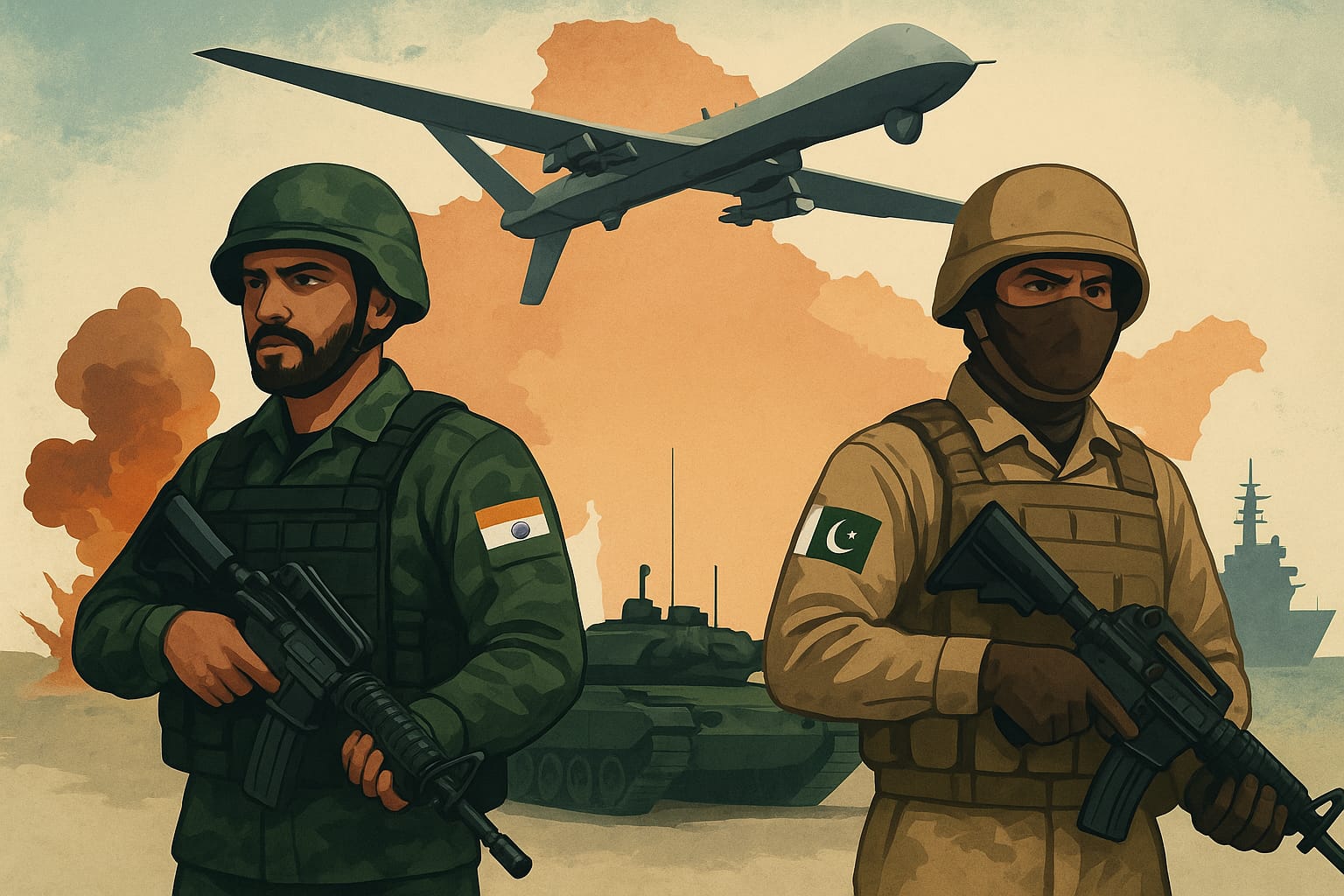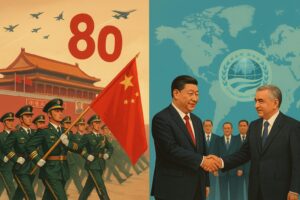Emerging Military Doctrines in South Asia:Conventional competition and Non-Traditional Challenges

Emerging Military Doctrines in South Asia: Conventional competition and Non-Traditional Challenges by GSI
Following its setback in operation Sindoor, India seems to be trying one more false flag operation in its ongoing activities. This was supplemented by the introduction of the new light commando battalion known as the” Bhairav force”, which is known as being terribly fearsome. It comes with the state of the art technology. With the concept of surprise, in a recent speech at the Kargil War Memorial, Army Chief General Upendra Dwivedi announced the unit as a lethal force using the Mahindra Armando Light Specialist Vehicles (LSVs) and all terrain platforms and the Bhairav units can be tasked with a deployment to the attack immediately and demolish the bunkers, destroy tanks and raid enemy positions.
At least three of its units are reportedly being deployed along the northern border with China and Pakistan and one on the northeast and the other on the western border, China is also a target since it was reported that China had been active in assisting and supporting Pakistan in the operation Bunyan um Marsoos. The recently raised Bhairav commands are expected to do work as a cross-border interface, resolution of reconnaissance and unfavorable positions, allowing India’s special forces to focus on more complex, high-chrimear missions. The main aim of such force is to establish the gap between special and conventional forces.
Along with the measures discussed above, India is also considering the introduction of the so-called “Shaktiban Regiments”,which in reality are specialized artillery units with swarm drones and remotely piloted aircraft systems. Then the establishment of Rudra Brigade, the Rudra brigade of the Indian army is made by converting two existing infantry brigades deployed along the border. These new formations integrate several combat weapons infantry, mechanized infantry, tanks, artillery, special forces and unmanned Ariel system with a single fighting and combat support. This development collectively indicates that India actively prepares for a new phase of conflict in the region after the shock in Operation Sindoor.
Conversely, the Prime Minister of Pakistan, Muhammad Shehbaz Sharif, in his speech of 14th August on the 79th Independence Day and celebration of Marka-e-Haq has announced the establishment of a “Rocket Force”.The force will be technology-oriented and will have the capability of delivering conventional military strikes. It is projected to be directly subordinated to the command of the Pakistan Army, and it will be equipped with traditionally armed systems including Fatah-l, Fatah-ll and Fatah-lV, which are meant to counter the future conventional response of the Indian missiles.
Meanwhile, Pakistan is susceptible to a blend of both conventional and non-conventional threats whereby India is taken to be either directly or indirectly a party. To begin with, terrorism continues to be experienced in the north western part of the country as there are numerous groups that are being run in this area and have been reported to be financed and sponsored by India. Second, India has been accused of attempting to arm water by unilaterally halting and discharging the water on its own will.
Recently, the deliberate release of excess water from Indian dams into three rivers Sutlej, Ravi and Chenab triggered devastating floods in Pakistan’s Punjab region. The number of those affected so far amounts to about 1.46 million and loss of homes and many civilian lives have been observed. Thirdly, the historical danger posed by India to Pakistan is the conventional threat which is manifested through greater military preparedness of New Delhi particularly in its failure during the Operation Sindoor.
These functions from both sides have significant implications for the general stability of South Asia, an area where most countries are still in different stages of development. Historically, instability in the region has often been inspired by rivalry between India and Pakistan, with their conflict in a wider geopolitical environment. The continuity of this adverse attitude not only disrupts the possibilities of regional peace and cooperation, but also reduces the efficiency of regional organizations such as SAARC, which is still unable to fulfill its ability due to constant political stresses.
Since their independence, India and Pakistan have continued to be fierce rivals, investing heavily in the strengthening of their military capabilities, but paying relatively little attention to human security issues. Nevertheless, the new strategic environment has changed with the emergence of various forms of non-traditional security threats including terrorism, climate change, scarce resources, and environmental catastrophes.
On one hand India is using a water as a weapon and On the other hand, Pakistan is becoming an apprehensive target of environmental pressures, something that is evident in places like Khyber Pakhtunkhwa (Buner and Swat), where disasters due to climatic changes have been a great disturbance. So, these dilemmas are becoming a bigger part of both nations, which points to the necessity of a more in-depth security strategy that stretches beyond standard military readiness.
In response to these new challenges, Pakistan prepared its first national security policy in 2022, which is clearly humanly focused in nature. This policy believes that real national security cannot be achieved only through military power, but should also include economic stability, political inclusion, food and water security, climate flexibility and the good of the inhabitants. At the moment it is mandatory for Pakistan to follow this policy and implement effectively, to protect himself from both traditional and non-traditional threats, as well as promotes stability and prosperity in South Asia.



